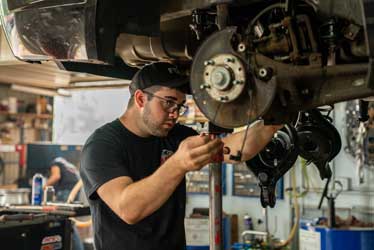All Categories
Featured

Two essential solutions that are frequently neglected but have a considerable influence on tire longevity and efficiency are tire rotation and placement. Allow's dive into what tire turning and placement are and why they're vital for your vehicle.
What Is Tire Turning? Tire turning is the procedure of relocating your tires from one position to an additional to guarantee they wear uniformly. Given that your automobile's tires function at different rates relying on their placement (front tires versus rear tires), rotating them frequently helps to disperse the wear evenly, resulting in a much longer lifespan for your tires.
Tires on the front axle have a tendency to wear faster than those on the back axle, especially in front-wheel-drive cars, where the front tires handle both guiding and power. On the various other hand, back tires may put on unevenly depending on the automobile's weight distribution and driving conditions. By revolving your tires every 6,000 to 8,000 miles (or as suggested by the supplier), you'll make certain a more well balanced wear pattern.
What Is Tire Alignment? Tire positioning, additionally understood as wheel alignment, refers to readjusting the angles of your auto's wheels to the maker's requirements. Proper alignment makes sure that your tires are aiming in the appropriate direction, and it aids optimize tire life and enhance car handling. There are 3 major elements of alignment: camber, wheel, and toe.
Camber refers to the tilt of the tires from the front of the automobile. If your tires are tilted as well much inward or external, it can trigger irregular wear. Caster refers to the angle of the steering axis when viewed from the side of the car. This influences the stability of the steering, specifically when driving directly. Toe describes the angle at which the tires point inward or external when seen from above. This impacts how your car tracks when traveling. A proper positioning ensures that all 4 tires are directing right ahead and are tilted appropriately. Misalignment can arise from hitting gaps, visuals, or simply from the wear of suspension elements with time.
Why Tire Rotation and Placement Matter. Extended Tire Life. Both tire rotation and positioning assistance protect against uneven tire wear. When your tires wear equally, they last much longer, which can save you cash over time by reducing the demand for premature replacements.
Improved Safety. Proper tire rotation and alignment improve lorry stability and handling. Misaligned tires or erratically used tires can adversely influence your capacity to steer and quit your lorry, particularly in emergency scenarios. Routine maintenance ensures your tires do efficiently, supplying a safer driving experience.
Better Gas Efficiency. If your tires are not straightened properly, they may drag against the road surface area, creating resistance. This additional friction can decrease fuel performance, triggering your car to eat even more gas. Routine tire placement makes certain that your automobile moves effectively, boosting gas mileage.
Enhanced Convenience. Misalignment or unevenly worn tires can lead to a rougher experience, as your car might pull to one side or create vibrations. By keeping your tires turned and straightened, you'll delight in a smoother and extra comfy driving experience.
Indications That Your Tires Need Rotation or Placement. It's important to stay sharp for any type of indicators that your tires need rotation or positioning. Keep an eye out for these typical signs:
Uneven Tire Wear: If you observe that tire is considerably much more used than the others, it might be time for a rotation or placement. Steering Pull: If your auto draws away while driving right, this could show imbalance. Vibrations: If you really feel resonances in the guiding wheel or the car itself, it might be a sign of misalignment or irregular tire wear. Squealing Tires: Unusual tire sound might likewise suggest inappropriate positioning or the demand for a tire rotation. How Often Should You Turn and Straighten Your Tires? Tire rotation should usually be done every 6,000 to 8,000 miles or as defined in your automobile's owner's guidebook. It's a great idea to revolve your tires throughout every oil adjustment, as this will aid you remain on top of normal maintenance.
As for placement, it doesn't require as frequent service. Typically, placement ought to be examined at least yearly or whenever you see concerns like drawing to one side or vibration. You might likewise need positioning if you have actually struck a big pothole or aesthetic, which can toss your wheels out of placement.
Final Thought: Keep Your Tires in Leading Forming. Tire turning and placement are vital solutions that maintain your automobile running smoothly, safely, and effectively. By putting in the time to have your tires turned and lined up on a regular basis, you're spending in your vehicle's efficiency and durability, while additionally boosting your safety and security on the roadway. Remain positive with tire maintenance, and your cars and truck will thank you with much better gas economy, improved handling, and extended tire life.
Latest Posts
Uncover Affordable Auto Repairs with Montclare’s Limited-Time Service Specials
Recognizing When Your Car Needs Skilled Auto Repair at Montclare Auto Repair
Find Out Reduce Expenses on Car Maintenance with Montclare Auto Repair’s Special Deals
More
Latest Posts
Uncover Affordable Auto Repairs with Montclare’s Limited-Time Service Specials
Recognizing When Your Car Needs Skilled Auto Repair at Montclare Auto Repair
Find Out Reduce Expenses on Car Maintenance with Montclare Auto Repair’s Special Deals